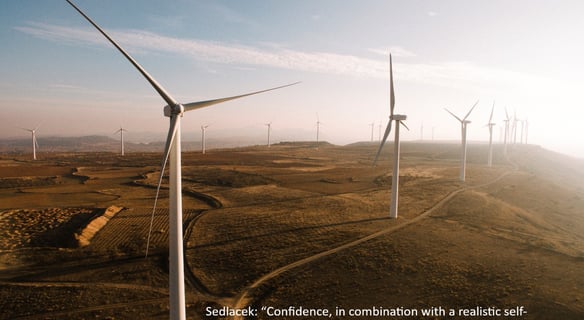Why Wind Power is Losing Investor Confidence
Explore why global investors are moving away from wind energy and what it means for the future of renewables is losing investor confidence
DEBT FINANCEPRIVATE EQUITY
Vijay B. G, Director – Information Support, Jade Corporate Advisors Pvt. Ltd.
6/11/20254 min read
1. Introduction
Wind energy has long been positioned as a cornerstone of global efforts to transition to a low-carbon economy. It is renewable, scalable, and has demonstrated cost competitiveness over time, particularly with the advancement of turbine technology and large-scale adoption in regions such as Europe, North America, and Asia.
Despite its potential, the wind energy sector is facing a challenging investment climate. While operational wind farms remain productive, the pace of new investments—particularly from private equity and institutional investors—is slowing. The sector is grappling with rising capital costs, policy uncertainty, and logistical barriers that have made returns less predictable and project risks more pronounced.
This article analyzes why major global private equity teams are scaling back their wind investment portfolios. Using frameworks from international business strategy, we assess the economic, geopolitical, and regulatory shifts that have made wind less viable for high-return-seeking investors, and what this means for the future of global renewable energy.
2. Global Market Overview
📉 Market Size and Declining Growth
Following a decade of exponential growth, the global wind market is now experiencing a slowdown. Between 2020 and 2022, capacity growth peaked across China, the U.S., and Europe. However, by 2024, new projects have been delayed or canceled due to cost inflation, increased interest rates, and strained supply chains.
🌍 Top Producers and Consumers
China leads globally with over 300 GW installed.
U.S. follows with strong onshore development, particularly in the Midwest.
Germany, Spain, and the UK continue to lead Europe, though face regulatory and community resistance.
India is emerging steadily, particularly in Gujarat and Tamil Nadu.
🌬️ Onshore vs. Offshore
Onshore wind remains dominant globally due to lower capital costs.
Offshore wind, while offering higher capacity factors, faces logistical and capital-intensive barriers, especially in the North Sea and East Asia.
3. Strategic Importance in International Business
⚡ Energy Security & Diversification
Wind energy offers nations energy autonomy by reducing dependence on imported fossil fuels. For energy-importing countries, wind is a tool for strategic resilience.
Yet, wind is no longer viewed as a "fast-return" investment. Long permitting timelines and regulatory hurdles have slowed project momentum, prompting PE firms to pursue faster-yielding sectors like solar and energy storage.
🌎 Climate Change & Carbon Reduction
Wind displaces fossil fuels, reducing global GHG emissions. One megawatt of wind power can offset thousands of tons of CO₂ annually. Policies like the EU’s Fit for 55 and the U.S. IRA (Inflation Reduction Act) highlight wind’s role in decarbonization.
Still, rising costs, grid integration issues, and complex project execution have made some investors skeptical of wind's near-term economic value.
4. Strategy Frameworks
a. SWOT Analysis
Strengths: Renewable, scalable, technological maturity.
Weaknesses: High capex, intermittency, land use issues.
Opportunities: Floating offshore tech, AI in optimization, emerging markets.
Threats: Fossil fuel lobbying, regulatory changes, inflationary pressure.
b. Porter's Five Forces
Supplier Power: High for rare earth and turbine component suppliers.
Buyer Power: Strong due to centralized utility procurement.
Substitute Threats: High from solar, hydrogen, and battery storage.
New Entrants: Moderate; high capital requirement deters most.
Rivalry: Intense among global manufacturers and project developers.
5. Policy & Regulatory Environment
Wind development is tightly coupled with national policies. Government incentives, international trade regulations, and certification requirements (e.g., ISCC, RSB) all shape feasibility and investor appetite. Regulatory instability, however, has introduced significant unpredictability in ROI.
6. Global Supply Chain & Logistics
From sourcing steel to turbine installation, wind relies on a complex international supply chain. Transportation of large components demands robust infrastructure—often absent in key growth markets. Offshore wind, in particular, requires specialized ships, ports, and cranes.
7. Market Entry Strategies
Common strategies include:
Joint Ventures with local firms to mitigate regulatory risks.
Technology Licensing to reduce entry costs.
Mergers & Acquisitions for faster market access.
Greenfield Investments where control and customization are essential.
8. Technology & Innovation
AI is reshaping wind operations—from turbine diagnostics to weather forecasting. Emerging technologies like floating wind and modular turbine design are promising but require more R&D. Cross-sector partnerships with universities and startups are becoming critical to innovation pipelines.
9. Sustainability & CSR
Wind’s carbon footprint is low, but sustainability extends beyond emissions:
Land use must be managed to avoid conflict with agriculture or conservation.
Lifecycle emissions from production, transport, and disposal are not negligible.
CSR priorities such as ethical mining, community involvement, and benefit-sharing are critical for social acceptance and compliance.
10. Challenges and Risks
Material volatility (e.g., rare earths, steel)
Policy inconsistency across borders
Transmission bottlenecks
Tariffs and trade restrictions
Technological failure risks
These risks—combined with long project timelines and slow ROI—have made wind a tough sell for PE firms.
11. Case Studies
Brazil: Early policy support catalyzed growth, but grid and financing constraints remain.
United States: Strong federal incentives, yet transmission and NIMBY issues persist.
EU: Regulatory leadership, but escalating project costs and delays dampen investor confidence.
12. Future Outlook & Strategic Recommendations
By 2030, offshore wind is expected to grow significantly, especially in Asia and Europe. By 2050, floating wind could dominate coastal renewable strategies.
Key recommendations for global wind firms:
Prioritize innovation (floating turbines, AI, modular tech).
Build local partnerships to navigate regulations.
Invest in sustainability and ethical supply chains.
Focus on flexibility to respond to shifting policy and economic environments.
13. The Learning:
Wind energy remains essential to global climate goals, but its investment landscape is changing. Oil-dependence, high capital requirements, and growing risks have reshaped investor sentiment. As PE firms seek higher certainty and faster returns, many are putting wind on pause.
To revive momentum, international collaboration, regulatory stability, and cost innovation will be key. Wind isn't out—it just needs a smarter, more resilient strategy to stay in the race for a sustainable future.


📰 Why Wind is Moved Out of Scope by Global Private Equity Investing Teams
Wind in the Global Market: Are Strategies for Sustainable Growth Falling Short?
Explore why global private equity firms are retreating from wind investment amid rising costs, policy uncertainty, and supply chain risks. Gain insights into the future of wind energy in the broader energy transition and its evolving investment landscape.
Capital Raising Tactics Every Founder Should Know
Jade Corporate Advisors Private Limited
COMPANY
📍INDIA HQ Postal and Communication Address: 10, Vivekananda ST, Chennai, India, 600044.
© 2025 Jade Corporate Advisors Private Limited, India. All rights reserved. This is the official blog of the company.


SERVICES
resources
☎ +91-9591312211
📬 Subscribe to Our Insights
Stay informed on capital raising, project readiness, and investor strategies—delivered via our LinkedIn Newsletter.
Capital Solutions. Global Reach. Strategic Growth.
Virtual CFO services
Official Website ! 🌐 https://www.rupeejunction.com
